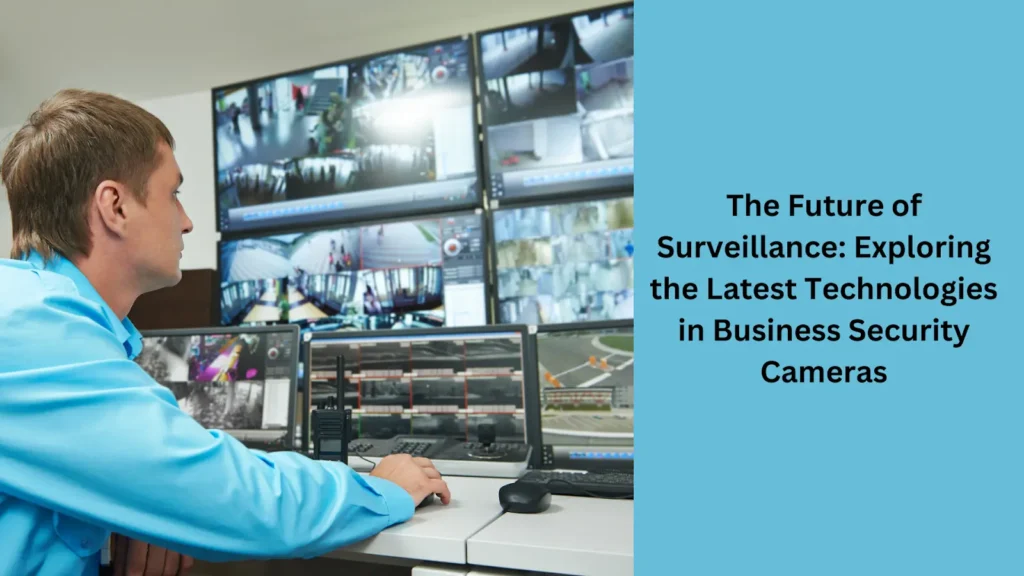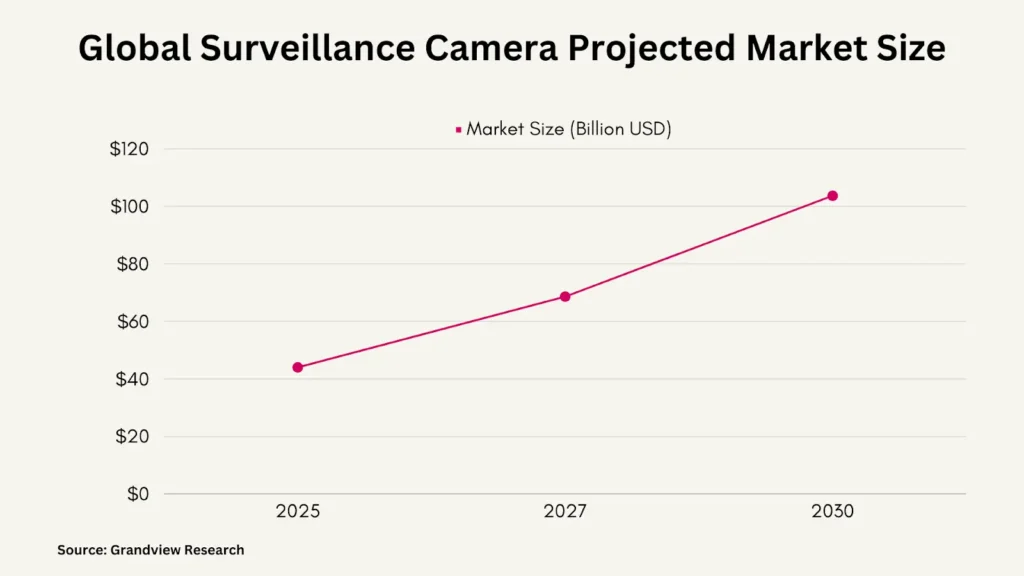The surveillance and security industry has undergone rapid change. Fueled by emerging technologies over the past decade, it has undergone rapid change. Software-driven systems with intelligent capabilities are replacing traditional analog security cameras across enterprises.

It is not only used in homes but in businesses as well. Several industries use surveillance technology to keep their establishments safe. This article highlights the key technological disruptions that are set to shape its future.
The Evolution of Surveillance Tech
The surveillance technology market has charted exponential growth recently. The information security sector is projected to surpass $172 billion in 2022. It has grown from $150 billion in 2021 to $172 billion in 2022. Software now drives most core surveillance functions. It enables analytics-based systems to unlock intelligent security applications.

The Rise of IP-Based Security Cameras
Internet Protocol (IP) cameras now account for over 85% of all security camera shipments globally. Fueled by a projected CAGR of 13.9%, the IP camera market valuation is expected to reach $30 billion by 20302.
Several inherent advantages contribute to the meteoric rise of IP cameras:
- Network connectivity enables seamless integration with existing IT infrastructure
- Inbuilt system-on-chip provides onboard storage, processing, and analytics
- Power over Ethernet removes the need for separate power cables
- Cloud compatibility allows remote accessibility from anywhere
This is according to industry researcher Thomas Lee. “IP cameras are the backbone of modern smart surveillance systems.”
Built-in video analytics also empower IP cameras to deliver:
- Real-time situational awareness
- Instant intrusion and motion detection alerts
- Efficient recording capacities
- Enhanced remote accessibility
Advantages of Using IP Cameras
High-Quality Resolution
One of the advantages offered by IP cameras is their ability to capture HD images and videos. Analog cameras tend to produce grainy and pixelated footage. However, as a video surveillance system, IP cameras offer greater resolution for clear identification of individuals or objects. It’s an important feature for scenarios that need facial or license plate recognition.
Remote Monitoring
Using IP cameras to monitor premises doesn’t limit you to being on-site. They can be accessed remotely using a computer or smartphone. You can view live feeds and playback footage from anywhere. Business owners can also receive real-time alerts and notifications. This convenience provides them with peace of mind regardless of their location.
Scalability and Flexiblity
IP cameras are amazingly scalable. They allow for easy addition or removal of cameras based on your needs. They use the current network infrastructure, so you won’t need to worry about extensive cabling. Even making installations and reconfigurations is simple and cost-effective.
Advanced Analytics and Integration
IP cameras offer advanced analytics to improve security. They have motion detectors and trackers and can identify suspicious behavior. Besides that, IP cameras can integrate with existing security systems like access control or alarms. You can create a comprehensive and efficient security ecosystem.
Cost-Effectivity
The initial investment in IP cameras may look expensive compared to analog ones. However, the long-term benefits they offer make the price worth it. IP cameras remove the need for separate cabling and digital video recorders. As such, they reduce installation costs. Furthermore, the scalability and flexibility of IP cameras don’t need any extensive rewiring. In effect, it will save home or business owners both time and money.
The Role of Artificial Intelligence
Business owners recognize the importance of AI and future-proof video surveillance systems, especially in securing their businesses for the future. Aside from their business models, their security has to keep up with the changes.
Otherwise, it could end up compromising everything they worked hard to achieve. Thus, modern businesses adopt blockchain technology, data masking, and other machine-learning methods for protection.
Integrating AI amplifies the capabilities of modern surveillance cameras, surpassing human limitations. AI empowers security systems to autonomously:
- Accurately identify individuals through facial recognition
- Classify vehicle models, types, and colors
- Detect anomalous activity and behaviors
- Analyze sounds like gunshots, explosions, or distressed calls
AI integration enhances security operations in the following ways:
- Increase threat detection accuracy by over 95%
- Enable continuous monitoring without fatigue
- Reduce false alarm rates by filtering benign events
- Empower predictive and proactive threat response
- Minimize manpower needed for 24/7 vigilance
This is according to industry analyst Thomas Wright. “AI eliminates the need for manually monitoring video feeds. At the same time, it enables predictive threat response capabilities.”
High-Resolution and Cloud Advancements
Enterprise-grade surveillance has becoming more accessible. This is all thanks to the ongoing innovations in camera capabilities and cloud offerings. High-resolution feeds up to 8K delivers enhanced clarity. Business owners can see fine details like license plates and facial features. Thus, if any unsavory acts were committed, it will be easier to track down the perpetrators.
“Compression algorithms now reduce storage requirements for high-res footage. Simultaneously, the cloud provides limitless scalability at lower costs.” This is explained by camera technology expert Wilson Edwards.
Centralized management of multi-site camera systems should be done through secure cloud connectivity. It ensures efficient remote administration.
The Future of Surveillance Systems
Here are the major tech disruptions that will shape surveillance in the next decade:
- Mainstream adoption of cloud-native security camera systems
- Integration of AI and deep learning across all network cameras
- Gradual phasing out of analog or hybrid surveillance setups
- Continued innovations focused on automation, visibility, and intelligence
Frequently Asked Questions
What camera system suits my business needs?
Assess video quality, bandwidth, storage capacity, and analytics requirements. Consider present needs and future scalability potentials before investing.
How will surveillance systems impact network performance?
Surveillance generates massive data flows across networks. Assess existing capability headrooms before deploying IP cameras. Allocate enough upstream bandwidths for individual cameras.
How accurately can cameras detect motion events?
Deep learning integration is coupled with high-resolution feeds. It enables 95%+ accuracy in identifying people and vehicles. Environment conditions impact overall performance.
Conclusion
Smart video analytics, AI, and cloud advancements are steering surveillance technology. It is approaching a new age of automation, intelligence, and efficiency. Modern businesses are moving fast to increase their security since it will also enhance their client’s trust.
With software taking center stage, enterprises now have versatile options with IP camera systems. On-premise or cloud, users have more flexibility for bolstering security while future-proofing investments.





